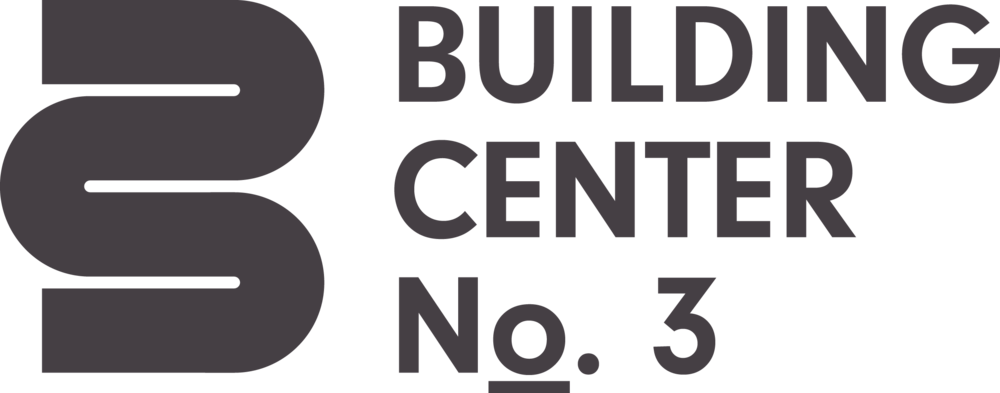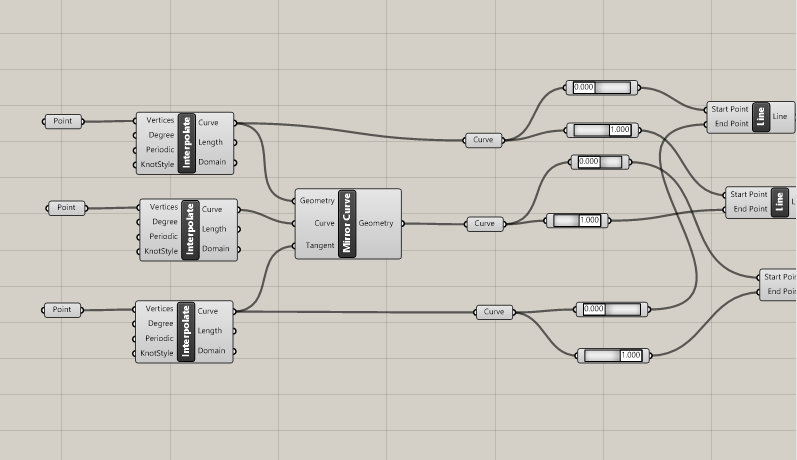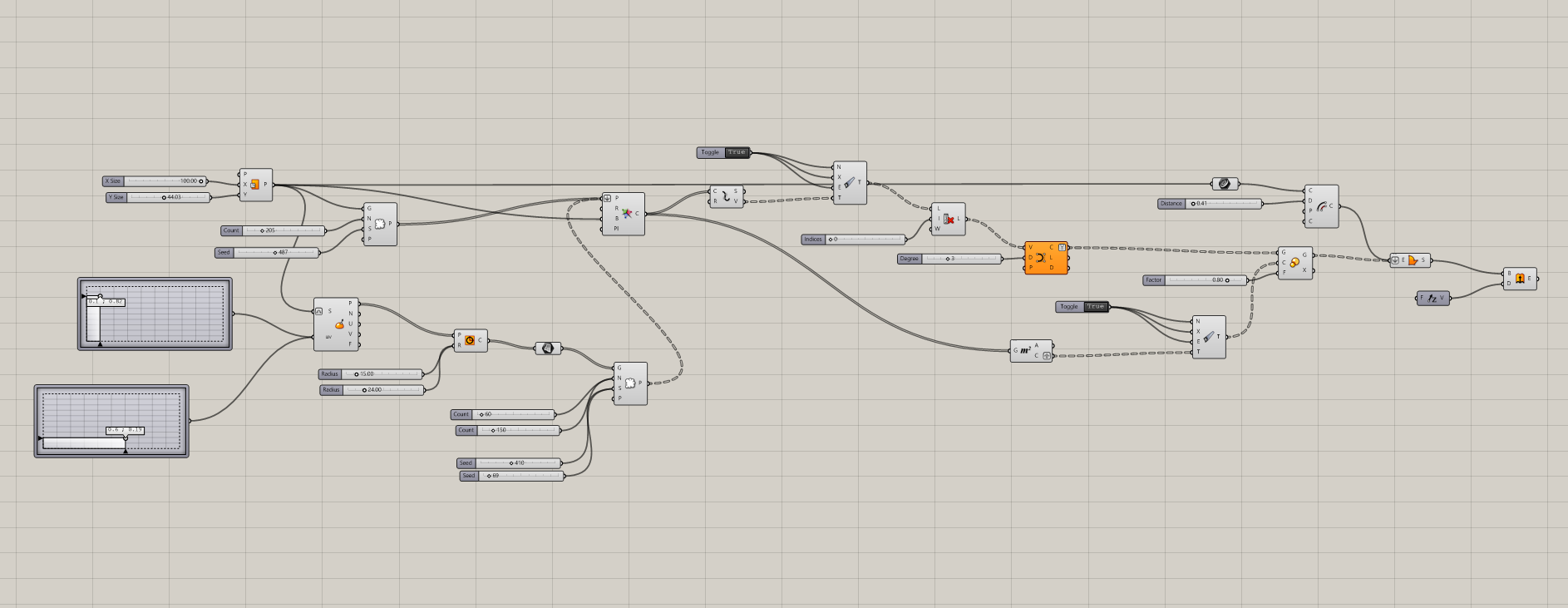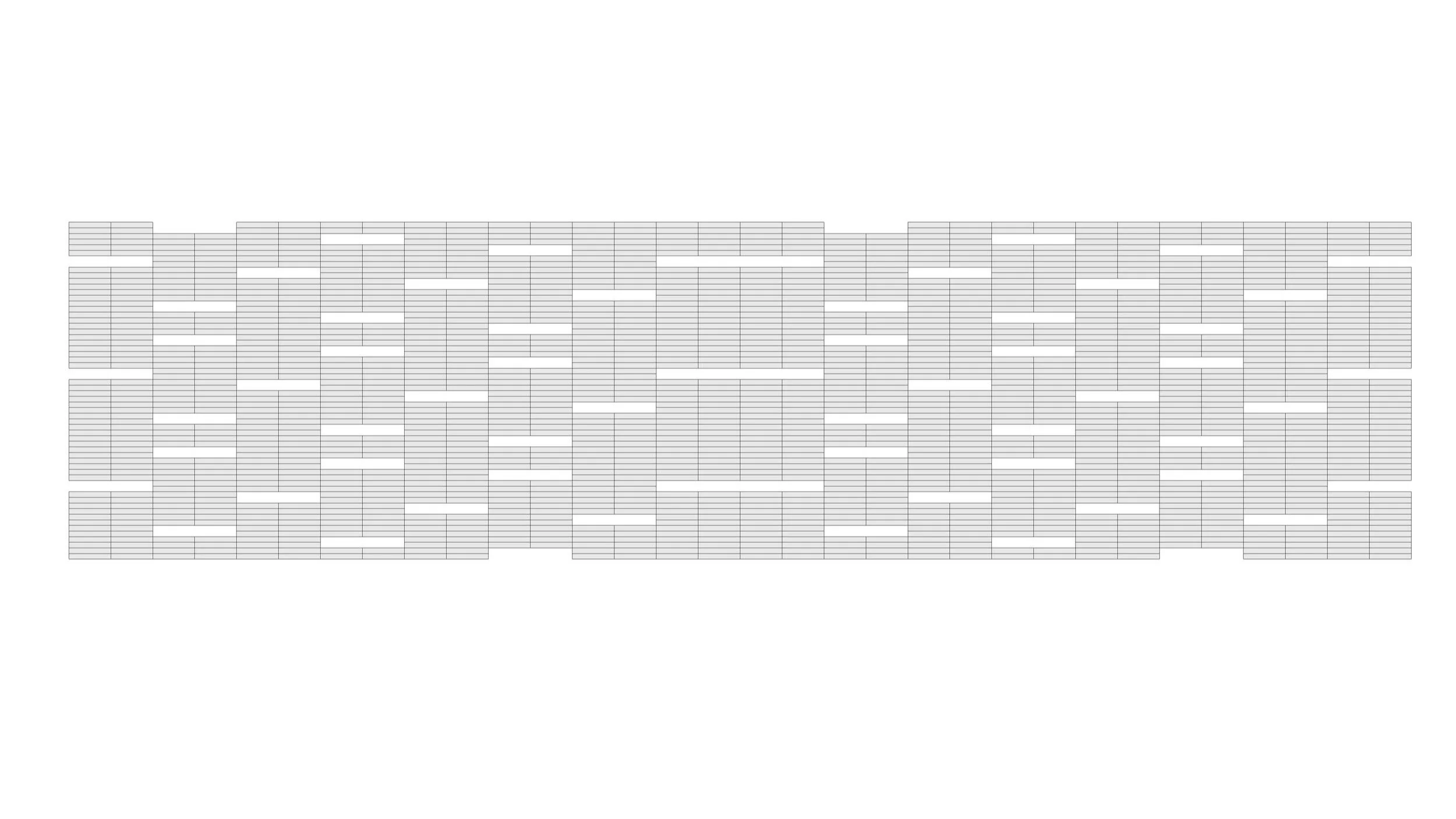Parameter controlled form (using Grasshopper) overlayed with hand sketch; this demonstrates that the initial hand sketch can be replicated with parameter-based formulas and then refined/modified according to design constraints.
In the previous post related to this topic we discussed early explorations using this tool. After these we began working at the scale of a building and using grasshopper to develop parameters that generate building forms such as repetitive roof structures; patterns in facade screens, and the volumetric shapes of buildings on a site.
Our first test project was a 30 room hotel in North Beach. With a triangular shaped site we used Grasshopper to create a Y shaped building form. Each side was pulled in, using parameters, to create more space on the site for open space and landscape. These parameters allowed us to control the concavity of each side individually, based on our preferences.
Screenshot of the parameters in Grasshopper that controlled the Y shaped expression.
Final hotel building geometry based on parameters and other design drivers.
Once the shape of the building was defined we began looking for parametric solutions to reduce solar heat gain with external shading geometries. We studied both organic and architectural pattern expressions that would form an external screen to be wrapped around the facade like a skin.
Grasshopper Voronoi mathematic expression used to generate one of the facade designs.
Visual representation of Grasshopper Voronoi diagram.
We then laser cut the screens to study the forms more closely. Then selected the more organic looking pattern.
Both screens laser cut from 1/8” thick MDF.
In the next post we will show how we applied these forms to the actual building.
Building Center No.3: Architecture firm in Miami; interior designer in Miami; landscape design in Miami.







